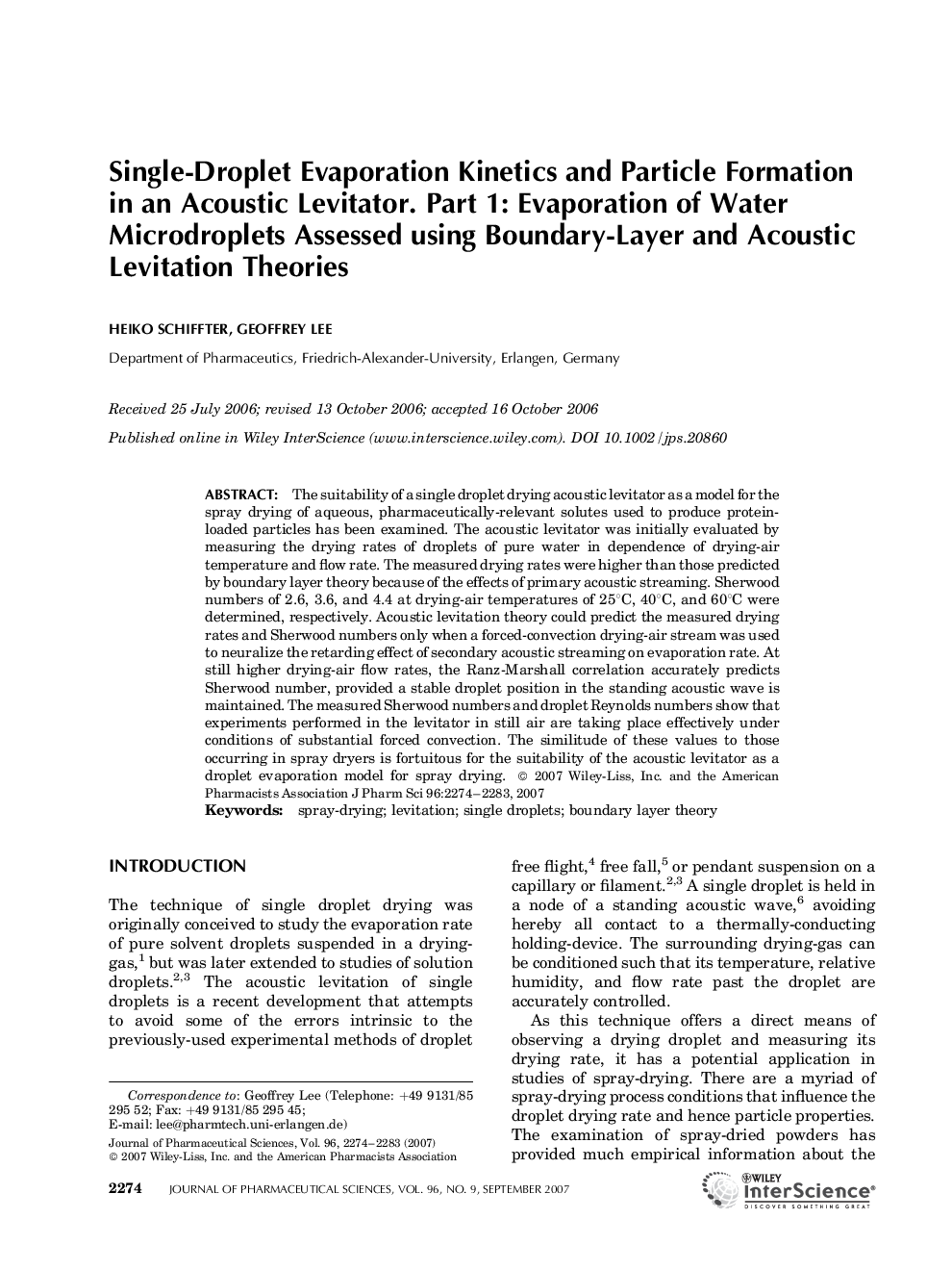| Article ID | Journal | Published Year | Pages | File Type |
|---|---|---|---|---|
| 2487555 | Journal of Pharmaceutical Sciences | 2007 | 10 Pages |
Abstract
The suitability of a single droplet drying acoustic levitator as a model for the spray drying of aqueous, pharmaceuticallyârelevant solutes used to produce proteinâloaded particles has been examined. The acoustic levitator was initially evaluated by measuring the drying rates of droplets of pure water in dependence of dryingâair temperature and flow rate. The measured drying rates were higher than those predicted by boundary layer theory because of the effects of primary acoustic streaming. Sherwood numbers of 2.6, 3.6, and 4.4 at dryingâair temperatures of 25°C, 40°C, and 60°C were determined, respectively. Acoustic levitation theory could predict the measured drying rates and Sherwood numbers only when a forcedâconvection dryingâair stream was used to neuralize the retarding effect of secondary acoustic streaming on evaporation rate. At still higher dryingâair flow rates, the RanzâMarshall correlation accurately predicts Sherwood number, provided a stable droplet position in the standing acoustic wave is maintained. The measured Sherwood numbers and droplet Reynolds numbers show that experiments performed in the levitator in still air are taking place effectively under conditions of substantial forced convection. The similitude of these values to those occurring in spray dryers is fortuitous for the suitability of the acoustic levitator as a droplet evaporation model for spray drying. © 2007 WileyâLiss, Inc. and the American Pharmacists Association J Pharm Sci 96: 2274-2283, 2007
Related Topics
Health Sciences
Pharmacology, Toxicology and Pharmaceutical Science
Drug Discovery
Authors
Heiko Schiffter, Geoffrey Lee,
